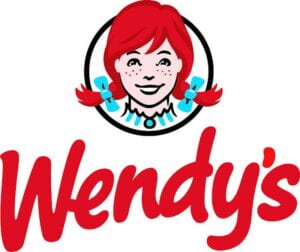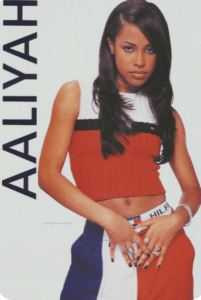I watched the film “No Logo: Brands Globalization Resistance”, a spin-off of Naomi Klein’s book No Logo. In it she shares with us how people are upset about how branding has taken over the way we interact with and perceive the world and our surroundings.

(https://nyu.kanopy.com/video/no-logo)
Interestingly, when companies began to shift to larger producers and warehouses, they were concerned they would lose the personal touch and relationship the shop owners had with their customers. They were worried a person’s loyalty that was linked to the relationship they had with the owner would stop without in-person connection. “So the original brands were comforting logos that were often people, like Quaker Oats or Aunt Jemima, that were essentially surrogate relationships” Klein says. “It’s like, okay, you’re not buying it from the local shopkeeper. You’re not buying it from the local farmer. But here is this image that you can relate to. You can form a personal relationship, albeit a fake personal relationship, but the message was you can trust it as much as you would trust [a real shopkeeper]”. In the film she highlights the Jolly Green Giant in addition the Quaker man and Aunt Jemima.



Do we still see this method today? By searching for “brands with people in the logo” I found the following (by no means exhaustive list):



However, there was much less of these examples than there were logos without people as the prominent feature. Interestingly, Gerber uses their Gerber baby as a source of marketing beyond just marking their products. Each year they select a “spokesbaby”, a child who’s application and photo is submitted by their parents to represent the brand for an entire year. This act of reaching out to the customers and engaging families with the branding is, in my opinion, quite brilliant. In addition to being awarded a $25k check, the family “(i) serve[s] as official Chief Taste Tester to taste and review new baby food products to help inform future innovations to foster nutritious product growth and highlight product quality; (ii) support the next generation of children through Gerber’s sustainability commitment of planting 1M trees in 2021; (iii) support the next generation of children and the world they inherit through Gerber’s larger brand act; and (iv) guest star as Gerber CEO for day where he/she will formally announce his/her 5-year plan and host a Gerber social media takeover to document this very important day-in-the-life as CEO” (Gerber.com). This platform really shows that Gerber baby food and products are for every baby.
Later in the film, Klein goes on to explain that the most successful brands have recognized that they are selling more than the physical item. “In a global marketplace they had to understand that their true product was not a product i.e. sneakers, movies, lattes, computers. It was an idea, a lifestyle. It was meaning itself” she says.
Thus, companies with successful branding strategies figured out how to intrigue us psychologically. Klein says “they understood that they could sell ideas, that they could sell lifestyles […and] became powerful precisely because they understood that they were selling ideas instead of products”.
“[Tommy Hilfiger was not the first] to put the logo on the outside of the clothing as opposed to on the inside of the collar. Lacoste and Polo had been doing that for a couple of decades, but there was a difference in scale, because it wasn’t the little alligator in the corner. [It was] almost like a walking talking, Tommy Hilfiger doll” (Klein).



In addition to this, the film also highlights how they focused on dressing pop stars to draw further attention to their values and interests as a brand.


So, how does this branding halo effect apply to today? Take this as an example. A giant blue puffer coat. Would you purchase this? For 550 aed?


What if I told you this was crafted from the “creators and purveyors of Everyday Luxury, [Aritzia]. Home to an extensive portfolio of exclusive brands for every function and individual aesthetic” (Aritzia.com). Is it more appealing now?
Maybe you need more convincing. Would you purchase it if you knew it was Kanye’s YZY x GAP collaboration? This blue puffer jacket sold out in a matter of hours for 735 aed a piece.


Still, to me this is not enough to pull out my credit card and make the purchase. However, I am intrigued by this one.


This is British stylist Carlotta Constant rocking The North Face x Gucci’s blue puffer at day three of London Fashion Week, February 2022. Now this is something that I would buy. Is it because she’s a style icon of mine? Is it because of the prominent branding on the side? I can’t pin down the precise reason, but it makes me feel something that the others did not. Ms. Constant paid whopping 9200 aed to “look like a cute little blueberry” (Constant via Instagram).
When contemplate buying such a jacket, whether it be Aritzia, YZY x GAP, The North Face x Gucci, etc., are we really purchasing them for their quality? Is that what we are paying a premium for? Rather, we are purchasing them because their branded identity emblazoned on the side. It is because we believe consciously or subconsciously this mark conveys a message about us. That our association with the mark can tell others something about us as a person, about our values or our qualities. It is the classic tale of halo effect.
Sources:
https://nyu.kanopy.com/video/no-logo
https://www.instagram.com/p/Caen8-VNHDi/
https://www.aritzia.com/us/en/aritzia/about-aritzia/about-us.html
https://selectabisso.com/en/kanye-west-yeezy-x-gap/
https://www.farfetch.com/ae/shopping/women/gucci-x-the-north-face-padded-jacket-item-17695490.aspx?size=23&storeid=10524&utm_source=google&utm_medium=cpc&utm_keywordid=33895608&utm_shoppingproductid=17695490-8876&pid=google_search&af_channel=Search&c=807410390&af_c_id=807410390&af_siteid=&af_keywords=aud-360016540289%3Apla-297226412379&af_adset_id=40241116445&af_ad_id=191626448585&af_sub1=33895608&af_sub5=17695490-8876&is_retargeting=true&shopping=yes&gclid=EAIaIQobChMIy8vZkOym9gIVmOvtCh1wSwUAEAQYBSABEgI_O_D_BwE
https://www.campaignlive.com/article/jolly-green-giant-goes-deutsch-ny-reinvention/1381328
https://www.pinterest.com/search/pins/?q=tommy%20hilfiger%20ads%2090s&rs=typed&term_meta[]=tommy%7Ctyped&term_meta[]=hilfiger%7Ctyped&term_meta[]=ads%7Ctyped&term_meta[]=90s%7Ctyped
https://sco.wikipedia.org/wiki/File:KFC_logo.svg
https://www.gerber.com/photosearch-contest-rules
https://www.nydailynews.com/news/national/wendy-logo-time-1983-article-1.1180587
https://www.rollingstone.com/culture/culture-news/quaker-oats-ends-aunt-jemima-brand-1016380/
Its interesting how we form a personal relationship not just with the seller (as you said we would have with the shopkeeper or a farmer) but with the brand itself. Sure, logos with people might help create this illusion of a personal connection, but as you say, it is not the only thing. Even for logos that do not have people on them, we look for this connection in customer service, in our interactions with the brand representatives and the overall perceived virtual connection we have with the brand through social media. As professor Goffredo often reminds us, we are social mammals. Your example with the jacket is why social media influencer culture is so successful as a marketing strategy. We feel like we have some sort of a connection to these celebrities/ influencers and begin to trust them (and yearn for their lifestyle) so much that we would buy (almost) anything they sell us.